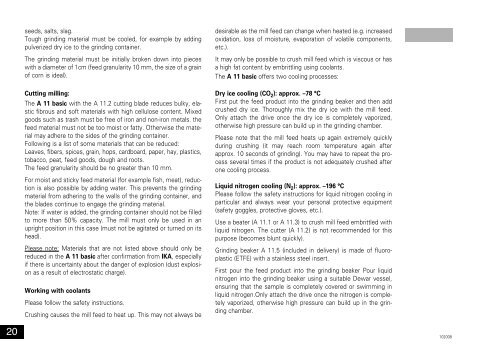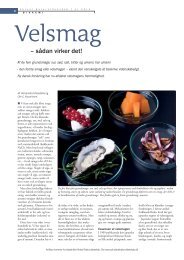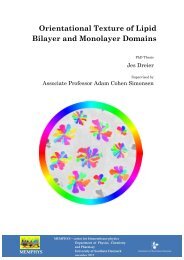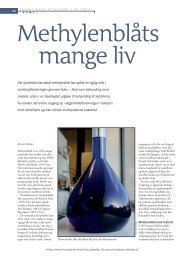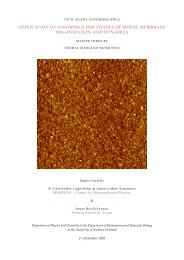IKA® A 11 basic - Memphys
IKA® A 11 basic - Memphys
IKA® A 11 basic - Memphys
You also want an ePaper? Increase the reach of your titles
YUMPU automatically turns print PDFs into web optimized ePapers that Google loves.
20<br />
seeds, salts, slag.<br />
Tough grinding material must be cooled, for example by adding<br />
pulverized dry ice to the grinding container.<br />
The grinding material must be initially broken down into pieces<br />
with a diameter of 1cm (feed granularity 10 mm, the size of a grain<br />
of corn is ideal).<br />
Cutting milling:<br />
The A <strong>11</strong> <strong>basic</strong> with the A <strong>11</strong>.2 cutting blade reduces bulky, elastic<br />
fibrous and soft materials with high cellulose content. Mixed<br />
goods such as trash must be free of iron and non-iron metals. the<br />
feed material must not be too moist or fatty. Otherwise the material<br />
may adhere to the sides of the grinding container.<br />
Following is a list of some materials that can be reduced:<br />
Leaves, fibers, spices, grain, hops, cardboard, paper, hay, plastics,<br />
tobacco, peat, feed goods, dough and roots.<br />
The feed granularity should be no greater than 10 mm.<br />
For moist and sticky feed material (for example fish, meat), reduction<br />
is also possible by adding water. This prevents the grinding<br />
material from adhering to the walls of the grinding container, and<br />
the blades continue to engage the grinding material.<br />
Note: If water is added, the grinding container should not be filled<br />
to more than 50% capacity. The mill must only be used in an<br />
upright position in this case (must not be agitated or turned on its<br />
head).<br />
Please note: Materials that are not listed above should only be<br />
reduced in the A <strong>11</strong> <strong>basic</strong> after confirmation from IKA, especially<br />
if there is uncertainty about the danger of explosion (dust explosion<br />
as a result of electrostatic charge).<br />
Working with coolants<br />
Please follow the safety instructions.<br />
Crushing causes the mill feed to heat up. This may not always be<br />
desirable as the mill feed can change when heated (e.g. increased<br />
oxidation, loss of moisture, evaporation of volatile components,<br />
etc.).<br />
It may only be possible to crush mill feed which is viscous or has<br />
a high fat content by embrittling using coolants.<br />
The A <strong>11</strong> <strong>basic</strong> offers two cooling processes:<br />
Dry ice cooling (CO2 ): approx. –78 °C<br />
First put the feed product into the grinding beaker and then add<br />
crushed dry ice. Thoroughly mix the dry ice with the mill feed.<br />
Only attach the drive once the dry ice is completely vaporized,<br />
otherwise high pressure can build up in the grinding chamber.<br />
Please note that the mill feed heats up again extremely quickly<br />
during crushing (it may reach room temperature again after<br />
approx. 10 seconds of grinding). You may have to repeat the process<br />
several times if the product is not adequately crushed after<br />
one cooling process.<br />
Liquid nitrogen cooling (N2): approx. –196 °C<br />
Please follow the safety instructions for liquid nitrogen cooling in<br />
particular and always wear your personal protective equipment<br />
(safety goggles, protective gloves, etc.).<br />
Use a beater (A <strong>11</strong>.1 or A <strong>11</strong>.3) to crush mill feed embrittled with<br />
liquid nitrogen. The cutter (A <strong>11</strong>.2) is not recommended for this<br />
purpose (becomes blunt quickly).<br />
Grinding beaker A <strong>11</strong>.5 (included in delivery) is made of fluoroplastic<br />
(ETFE) with a stainless steel insert.<br />
First pour the feed product into the grinding beaker Pour liquid<br />
nitrogen into the grinding beaker using a suitable Dewar vessel,<br />
ensuring that the sample is completely covered or swimming in<br />
liquid nitrogen.Only attach the drive once the nitrogen is completely<br />
vaporized, otherwise high pressure can build up in the grinding<br />
chamber.<br />
102008


